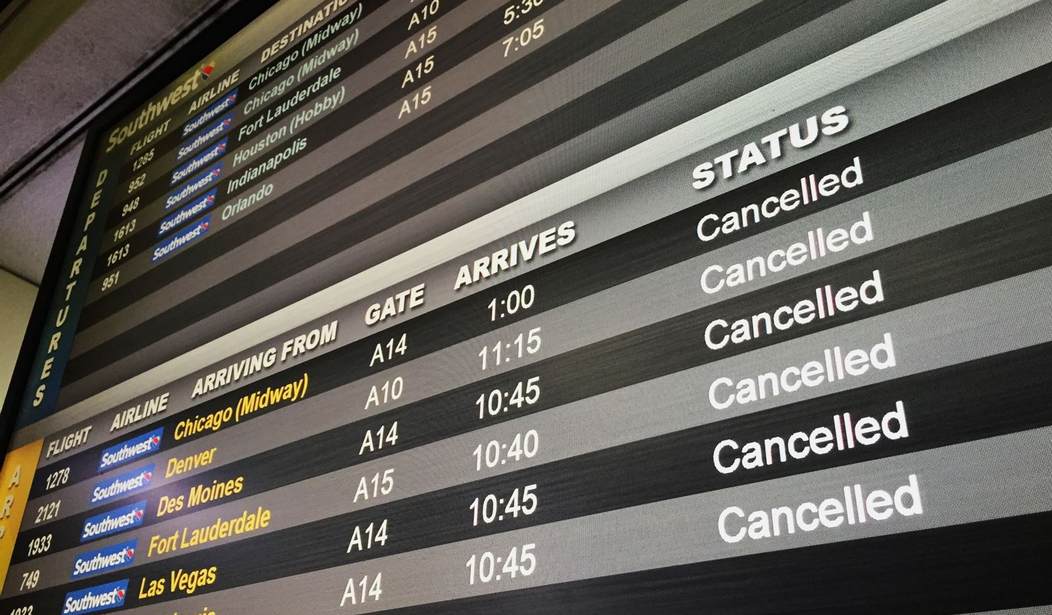The ban was worth a shot, if only to try to slow the variant down and buy time before it spread here. And even if it wasn’t worth a shot, Biden had little choice but to order it as a matter of political reality. More than 70 percent of Americans supported the ban earlier this month. If he had refused to implement it, the rampant spread in New York City and Washington D.C. right now would be laid squarely at his feet by Republicans. This wouldn’t be happening if Biden had done what Trump did and banned travel.
The next time we do something like this, though, we should be more serious about it. A super-contagious variant will spread to every continent in short order and will enter the U.S. through those routes even if direct routes to the hot spot are banned. If we’re really going to try to keep it from crossing our border, we have to ban travel globally, not to eight countries.
And I’m guessing 70 percent of Americans wouldn’t go for that. Especially on short notice right before Christmas.
The administration will lift the restrictions effective Dec. 31 at 12:01 a.m., the official said…
“Remember why I said we put the travel ban on. It was to see how much time we had before it hit here so we can begin to decide what we needed by looking up what was happening in other countries,” [Biden] said [this week]. “But we’re past that now.”
The senior administration official said the Centers for Disease Control and Prevention recommended that Mr. Biden lift the restrictions because U.S. health officials now better understand the Omicron variant. The CDC also determined that international travelers from Southern Africa will have little effect on U.S. cases because the variant is widespread across the country, the official said.
Semi-serious question: Should South Africa impose a travel ban on us?
New Covid deaths vs. cases in South Africa during four waves. pic.twitter.com/iBe6BtJEkE
— Scott Gottlieb, MD (@ScottGottliebMD) December 23, 2021
We’re the Omicron hot spot now, not them. Surely they don’t want disease-ridden Americans bringing the strain back to Pretoria just as they’re about to clear it.
The steep rise and fall of the new variant in South Africa raises the question of how long America’s Omicron wave will take to crest and then ebb:
Any thought on the roughly 3-week wave in Gauteng? From take-off on Nov 24 to peak on Dec 15 (and now dropping just as fast, and in other provinces). This would put a similar peak in US cities around Jan 5, give or take a few days. pic.twitter.com/6fWC5BGYWe
— Aaron Astor (@AstorAaron) December 24, 2021
Waves typically wash through in two months or so but the new strain seems to be on its own schedule. There are conflicting factors too in trying to guess whether our bout with it will be longer than Africa’s. On the one hand, the protection provided by boosters against infection looks like it fades quickly. A third dose of Pfizer was 70 percent effective against symptomatic disease from Omicron in the first two to four weeks afterward but just 45 percent effective after 10 weeks according to new data from the UK. (Moderna was better, with 70 percent protection after nine weeks.) The worse the vaccines are at preventing infection, the more the variant will keep spreading. Maybe the natural immunity enjoyed by the majority of South Africans is better at limiting transmission.
And don’t forget that while it’s winter in the U.S., it’s summer down there. They’re benefiting from a seasonal effect, perhaps, while we’re suffering from one with so many people forced indoors to shelter from the cold. That should mean a longer wave.
On the other hand, scientists at IHME speculate that as many as 90 percent of Omicron infections could be asymptomatic. They expect a colossal number of those infections during January and February, with potentially some 140 million people(!) catching the virus, but the overwhelming majority of them may never realize they’re infected. And that could matter to the spread: The evidence gathered by the NFL over the past year is that asymptomatic people rarely transmit the virus:
Sills first told the NFL Network that the league has not seen verifiable asymptomatic spread this season, and later fleshed out his point in an interview with ESPN.
“I think all of our concern about [asymptomatic spread] has been going down based on what we’ve been seeing throughout the past several months,” Sills told ESPN. “We’ve got our hands full with symptomatic people. Can I tell you tonight that there has never been a case when someone without symptoms passed it on to someone else? No, of course I can’t say that. But what I can say to you is that I think it’s a very, very tiny fraction of the overall problem, if it exists at all.
Most of the season was played before Omicron emerged, though. Are people infected with the new variant also unlikely to spread it if they have no symptoms or are the rules different because of its mutations? It’s hard to square IHME’s projection of an enormous number of cases with their estimate of how many of those cases might be asymptomatic *if* the asymptomatic are rarely contagious. How do you get to 140 million cases if only 14 million or so are infecting others? That’s a lot of superspreader events.
Alternately, it could be that the NFL is full of crap. It usually is.
Anyway, if you happen to find yourself with a “cold” over the next few weeks, be sure that it really is a cold before socializing with others. A young child in my extended family had a “cold” last weekend when he visited his two seventysomething grandparents and now they’re both sick with … something. I wonder what it could be.









Join the conversation as a VIP Member